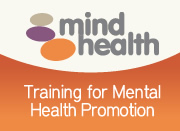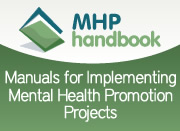Tools
- Utilities:
- Print this page
- Send this page
- Font size:
- Increase font size
- Decrease font size
Implementation
Overview
This phase deals with the issues relating to the implementation of mental health activities in the settings. Using the mental health programme plan developed in the last phase, the project team needs to determine which activities can be financed and implemented (there may be more than one) during the first year and then they can begin to develop the implementation programme. Before an activity can be implemented the project team has to assess what resources, facilities and personnel are needed; it must be clear what the aims are, how to meet these aims; and who is going to do what, when and how. When considering the implementation of each activity it is important to consider how to cope with resistance to activities and how to encourage people to participate. Finally, when the implementation programme for each activity has been completed, the project team are ready to implement the activities.
To ensure that implementation runs as smoothly as possible, it is important to communicate to people about which activities have been selected, when they will be introduced and the procedures they need to follow to participate in the activity.
Objectives
- To develop an implementation programme for each activity
- To implement activities
Types of Tools Relevant for this Phase
The tools that are relevant to this step can be divided into types. The first type includes tools that:
- Provide guidance on how to carry out plans and manage a project. These tools will address such issues as – how is responsibility distributed, who should participate, how are the targets of the actions measured, ways and means of providing feedback.
- ‘How to’ Manuals will be relevant to this step as well.
- Many of these documents will be generic rather than specific to the target group although there will be exceptions.
The second type includes all instruments that are about intervening with people. Thus it includes:
- Individual assessment instruments,
- Individual planning tools,
- Training and development tools,
- Counselling and support approaches, and
- Programmes of promotion and prevention, e.g. suicide prevention.
- Any tools that are about bringing about change in people’s attitudes, awareness or behaviour in relation to mental health are included under this step.
What Needs to be Done and How to Do It
There are four main activities which take place during the Implementation Phase. It is recommended that these activities are conducted consecutively.



